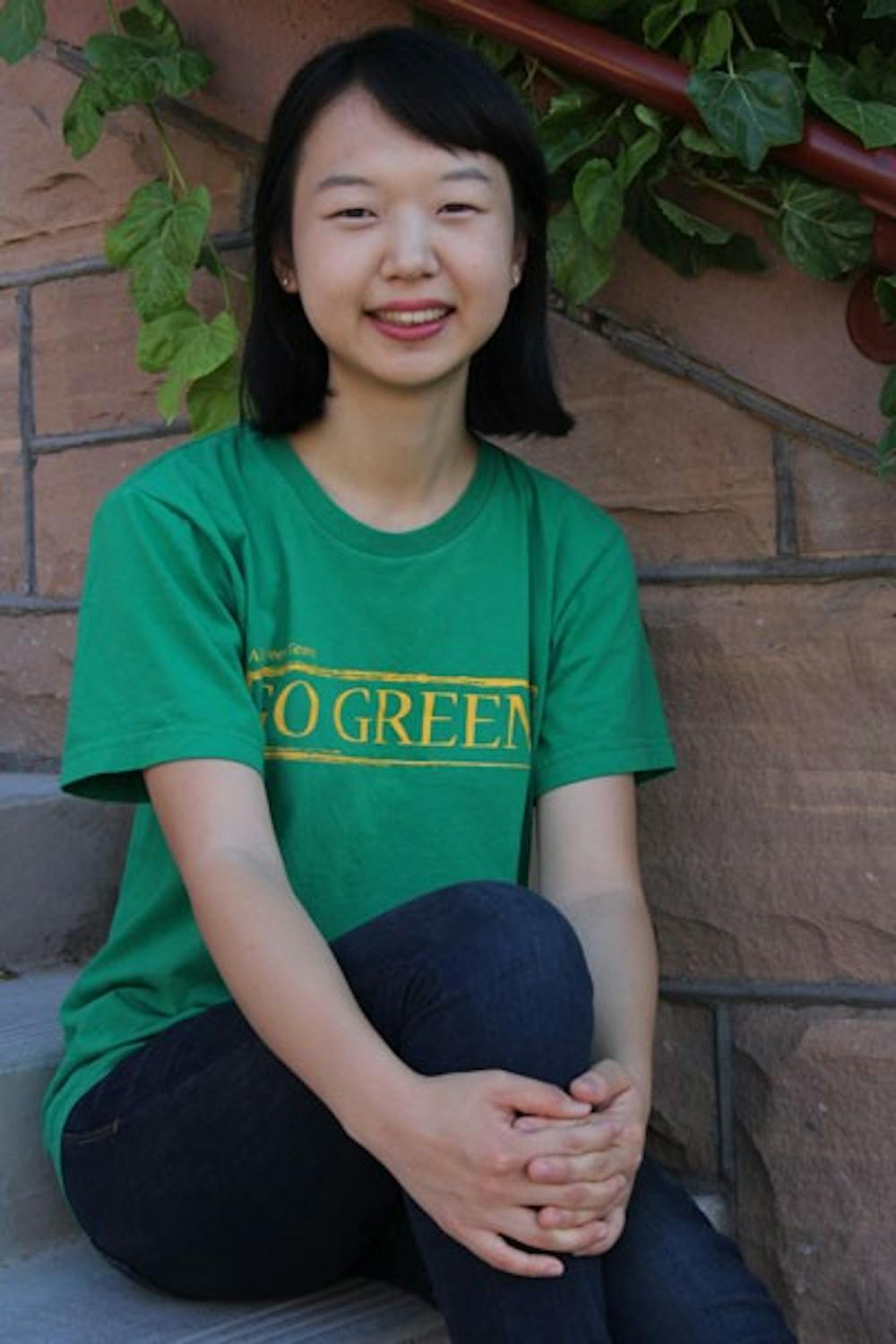 Sustainability senior Hyejung Lim helped with the Plateau Solar Project earlier in May. The project provided Navajo Nation elders with electricity, clean water and inside plumbing. (Photo by Ana Ramirez)
Sustainability senior Hyejung Lim helped with the Plateau Solar Project earlier in May. The project provided Navajo Nation elders with electricity, clean water and inside plumbing. (Photo by Ana Ramirez)While most Arizonans take turning on a sink, reading after dark or using an inside toilet for granted, many people on the Navajo Nation in northeastern Arizona go without these luxuries.
According to Navajo tribal statistics, about 18,000 out of the 48,000 homes on the Navajo Nation go without electricity and indoor plumbing.
In May, 18 ASU students and four faculty members teamed up with groups including nonprofit Navajo organization IINA Solutions, Mark Snyder Electric and Global Solar Water Power System Inc. to help during the second phase of the Plateau Solar Project, a solar installation program.
Students and faculty spent two weeks digging trenches and installing solar panels for elders of the Navajo Nation.
Many students assisted in physical labor and stayed with one of the families they helped.
On Sept. 24, students, faculty and contributors of the Plateau Solar Project will speak at Diggin’ Off-Grid on the Navajo: Plateau Solar Project. The event starts at noon in Room 481 of Wrigley Hall on the Tempe campus.
Sustainability senior Hyejung Lim lived with one of the elders for a few days.
She said it was interesting to see how they struggled.
“It was crazy,” Lim said. “The condition at the Navajo Nation is really bad compared to here.”
Her favorite part of the trip was installing solar tracking systems, which provide electricity to a stand-alone structure that could power an entire house.
“It was cool to see something I learned from the textbook in person,” she said.
Lim was allowed this opportunity through GlobalResolve, an ASU program.
Mark Henderson, director of GlobalResolve and professor in the College of Technology and Innovation, helped during the installations.
GlobalResolve has existed for six years and has worked in the Navajo Nation, Ghana and India.
“It’s a program at ASU that works in developing countries to reduce poverty by creating sustainable communities,” Henderson said.
Henderson said it’s important that each student knows he or she can make a difference. He said students can participate in many classes and project courses.
Henderson said the elders and especially the children of the Navajo Nation were grateful for the project.
“It’s a hard life,” he said.
Mark Snyder has worked with alternative energy for 40 years. He worked with IINA Solutions to begin the Plateau Solar Project in December 2011. The project will eventually provide 37 off-grid living solutions for tribal elders.
The project will provide them with solar power, water storage, solar heating and cooling, electricity, plumbing and gas.
“So many of the elders were drinking water from the windmill,” Snyder said. “Our first project was to address that major issue.”
Many elders were dying from drinking the water, Snyder said.
He said they were being exposed to leftover radioactive waste from closed uranium mines that had been in use during the Cold War. These chemicals have led to cancer, diabetes and other illnesses.
Snyder said 98 percent of previous attempts at installing solar panels on the Navajo Nation failed because they were poorly installed.
He said many of these panels were not fastened, wired or properly protected from weather.
The system would often freeze during the winter or cook during the summer, he said.
Snyder and his crew first created a climate-controlled building to protect the solar systems against such harsh elements. The airtight building had a bathroom, sink and water heated with solar energy.
“We tried to integrate everything into one structure,” he said.
Snyder invented the structure, Enertopia Multi-Purpose Utility Structure, which he said should last 30 to 35 years.
So far, Mark Snyder Electric and IINA Solutions have installed 31 solar systems. ASU students helped with 10 of these.
The solar systems provide electricity for refrigeration as well, improving elder’s diets and allowing them to store life-saving medication, Snyder said.
“They’re really happy they can eat fresh food instead of canned,” he said.
Snyder said many of the elders have three generations of their extended families living with them.
“The goal is for the next generation to grow up and to have productive lives,” he said. “They’re such sweet, wonderful people.”
Reach the reporter at amrami13@asu.edu




